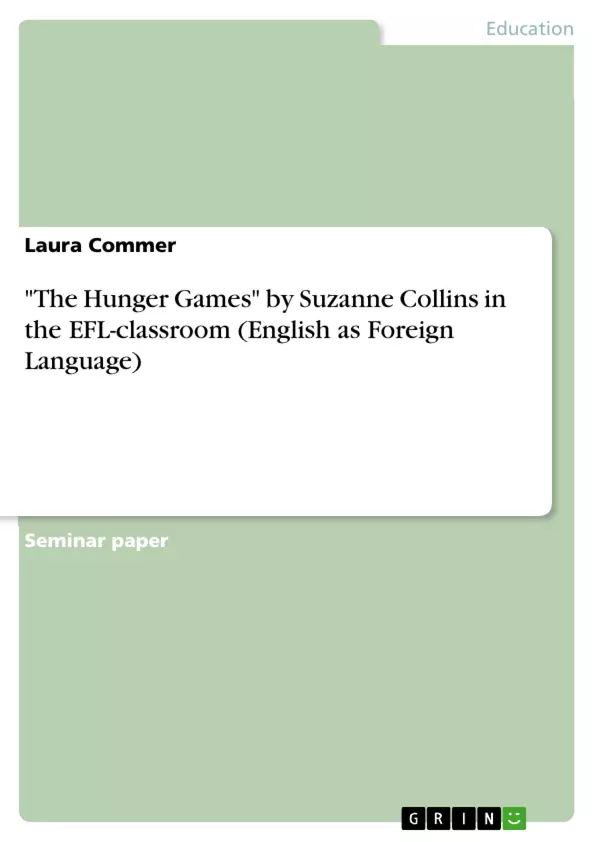This paper aims to answer the question which central dystopian elements can be found in The Hunger Games and if and how this novel is suitable for the EFL (English as Foreign Language) classroom. Therefore, dystopian elements are briefly explained and their appearance in the novel is analysed. Afterwards, the novel itself is examined according to its chances and challenges for foreign language teaching. Lastly, possible teaching material on the novel is presented for a Leistungskurs in the German Oberstufe before coming to a conclusion.
Inhaltsverzeichnis (Table of Contents)
- Introduction
- Content Analysis
- Terror system
- Propaganda
- Analysis from the Point of View of Teaching English as a Foreign Language
- Chances
- Challenges
- Teaching Activities
- Pre-reading activity
- While-reading activity
- Post-reading activity
- Conclusion
- Bibliography
Zielsetzung und Themenschwerpunkte (Objectives and Key Themes)
This paper aims to investigate the dystopian elements present in Suzanne Collins' "The Hunger Games" and analyze its suitability for the EFL classroom. The paper explores how the novel can be utilized as a tool for teaching English as a Foreign Language and provides possible teaching activities for the German Oberstufe.
- Dystopian elements in "The Hunger Games"
- Analysis of the novel's suitability for EFL teaching
- Teaching materials and activities
- The impact of "The Hunger Games" on dystopian fiction
- The novel's relevance in contemporary society
Zusammenfassung der Kapitel (Chapter Summaries)
The introduction provides background information on "The Hunger Games" trilogy and explores the novel's cultural impact. The content analysis chapter examines the dystopian elements in the novel, focusing on the terror system and propaganda employed by the Capitol to control its citizens. This section explores the book's social commentary on issues such as totalitarian regimes, social inequality, and media manipulation.
The chapter on teaching English as a Foreign Language analyzes the potential benefits and challenges of using "The Hunger Games" in the EFL classroom. It explores the language complexities of the novel and the cultural insights it offers, while addressing potential difficulties in comprehension and discussion for foreign language learners. This section also provides an overview of possible teaching activities that can be utilized to enhance comprehension and encourage critical thinking about the novel's themes.
Schlüsselwörter (Keywords)
The Hunger Games, dystopian fiction, totalitarianism, propaganda, social inequality, media manipulation, EFL teaching, language acquisition, cultural analysis, critical thinking, teaching materials, dystopian society, control, power, oppression, resistance, youth, rebellion, survival, morality, ethics.
- Arbeit zitieren
- Laura Commer (Autor:in), 2018, "The Hunger Games" by Suzanne Collins in the EFL-classroom (English as Foreign Language), München, GRIN Verlag, https://www.grin.com/document/999807



